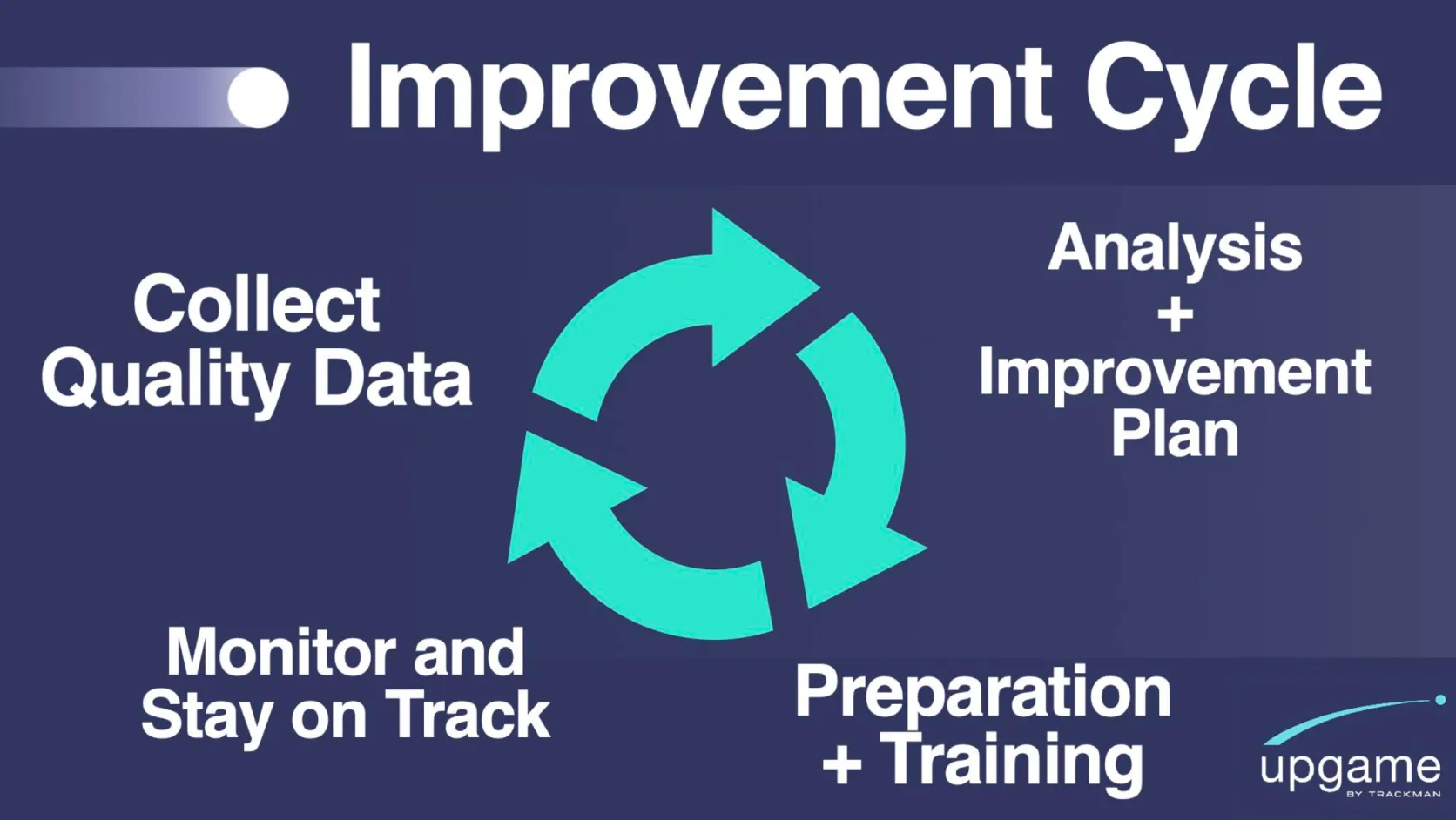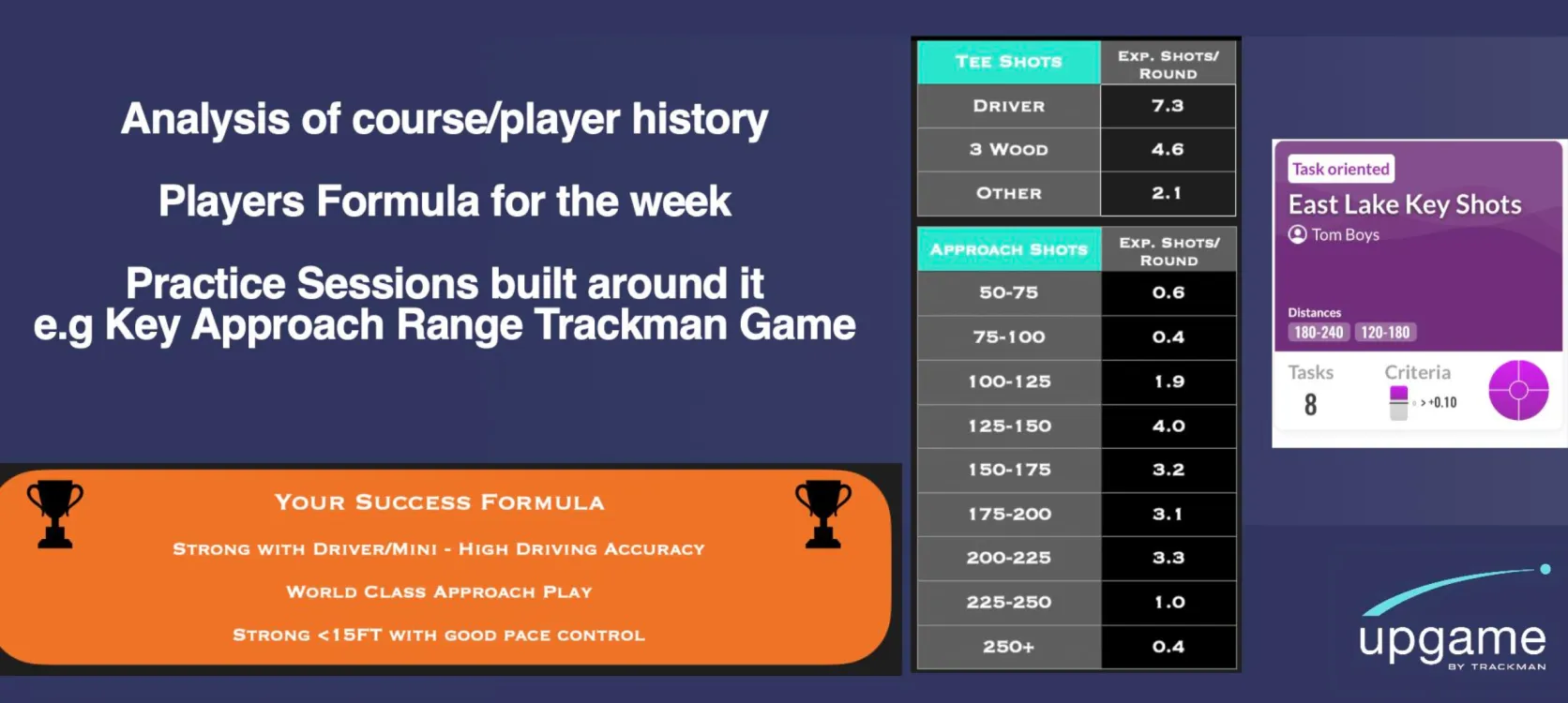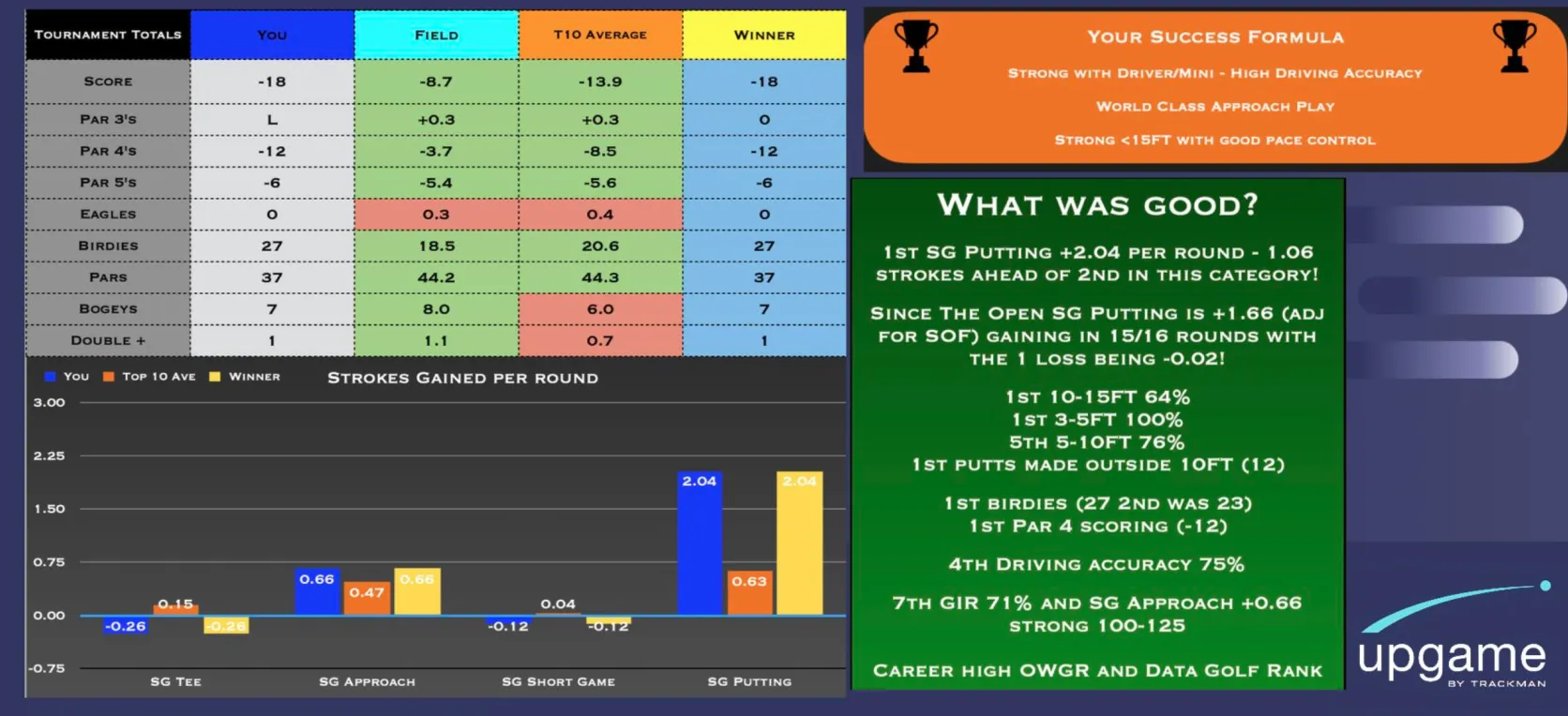Trackman Talks: From data to victory at East Lake
How Fleetwood prepared for the Tour Championship
Trackman Talks returns with a working blueprint. In this episode, Niklas Bergdahl sits down with Tom Boys – “Boysey” to most – Head Analyst at Upgame and a key figure in Tommy Fleetwood’s team.
Their conversation isn’t mythology about a hot putter; it’s the anatomy of a win: How good data, read correctly, becomes preparation, then patterns, then points on the board.
What you'll get from this episode
A clear improvement cycle you can copy
How to turn numbers into game-like practice that actually transfers to scoring
A simple framework for measuring what matters and reviewing progress after you play
Practical ways keep improvement steady over time
Watch the full episode
Trackman Talks: From data to victory with Tom Boys
The improvement cycle that travels
Boys describes a simple loop that strong teams actually follow:
Collect quality data — on-course and in Trackman, logged through the Upgame app.
Analyze performance — identify strengths, weaknesses, and course-specific demands.
Prepare targeted plans — build practice routines and strategy aligned with data.
Execute and adapt — monitor during competition, stay disciplined to the process.
The emphasis isn’t on cleverness. It’s on the discipline of repeating the loop until the results show up. That’s how you turn noise into signal.


East Lake, by the numbers
The Tour Championship at Eastlake presented unique challenges. It’s renovated setup demanded accuracy, with heavy penalties for fairway misses.
Fleetwood’s team responded on three fronts that week—course analysis, equipment choices, and pressure-ready practice.
They identified safe miss zones and the short-game asks; carried both driver and mini driver to flex between distance and placement; and built Trackman-based completion tests around the approach windows East Lake really asks for. It wasn’t “drills.” It was a dress rehearsal.
Venue preparation


Player praparation


Execution, then proof
Fleetwood’s success came down to executing the “success formula” set before the week:
High driving accuracy
World-class approach play
Strong putting inside 15 feet
After the week, the ledger matched the plan: Fleetwood ranked first in strokes gained putting, first across several putting-distance bands, and fourth in driving accuracy — numbers that don’t happen by accident.
The post-event review compared goals to outcomes and locked the learning in place. In Boysey’s phrasing: do your own debrief, every time, and let the data tell you what’s next.


How world-class approach play is built (not wished for)
Fleetwood’s approach play is no accident. What looks like “ball-striking” is really four steady levers anyone can adjust:
Habits: Elite iron play isn’t a new tip; it’s boring, daily basics. Setting up the same alignment/constraint station every session (sticks + “box”) to keep swing tendencies in check so start lines and strike stay predictable.
Yardage calibration: Run a structured practice station focused on yardage calibration: half, three-quarter, full swings for each wedge/short iron. Log carry and dispersion with your caddie/coach and note conditions (turf, temp, altitude).
Key yardage numbers (not just the distance): Don’t stop at “it went 132.” Record the why behind the carry: launch angle, ball speed, spin rate (and, when you can, attack angle/dynamic loft). If a shot flies long/short, these tell you whether it was loft delivery, strike, or speed.
Environment (Formby Hall Par-3 course): Your practice landscape shapes your skill. For Fleetwood, growing up on a demanding par-3 course meant constant mid-iron/wedge reps to tight targets. You can copy this by playing par-3 loops or forward tees and adding short, scored tests that mimic tournament pressure.
These are boring on purpose. Boredom is often what consistency feels like from the inside.
The mental game inside the data
As discussed in Trackman Talks: The Mental Game Big Three, the numbers don’t work if the attitude doesn’t travel.
Even with all the data, the journey still comes down to mindset. Boysey highlighted Fleetwood’s resilience after setbacks, like near-misses earlier in the season. The key wasn’t chasing results, but committing to the process.
“It’s not about comparing yourself to others,” Boysey said. “It’s about comparing yourself to your own benchmarks and moving them forward.”
The team highlighted some mental learning's from Fleetwood's preparations and performance:
Resilience
Belief in your process
Patience
Smart Hard Work
Repeating the improvement cycle over countless training sessions and competitions is the key. That long-term focus — years of smart, diligent work — is what turns data into victory.
What coaches and players can apply
Run the improvement loop: Collect, analyze, prepare, execute, repeat. Week over week, not once.
Design practice that mirrors the course: Convert Trackman numbers into completion tests at the exact approach windows you’ll face next.
Debrief like a pro: Write the plan in advance, then score it after. Keep what worked; schedule what needs shoring up.
Protect the pattern: Think long-term. Success isn’t a one-week fix — it’s years of process discipline, one improvement cycle at a time.
Watch the full episode of Trackman Talks with Tom Boys for the complete conversation, including the granular tests they used in the run-up and the post-event review that followed.
For deeper dives into building plans and measuring transfer, explore Trackman University resources and our earlier episode on Turning Data into Smarter Practice.